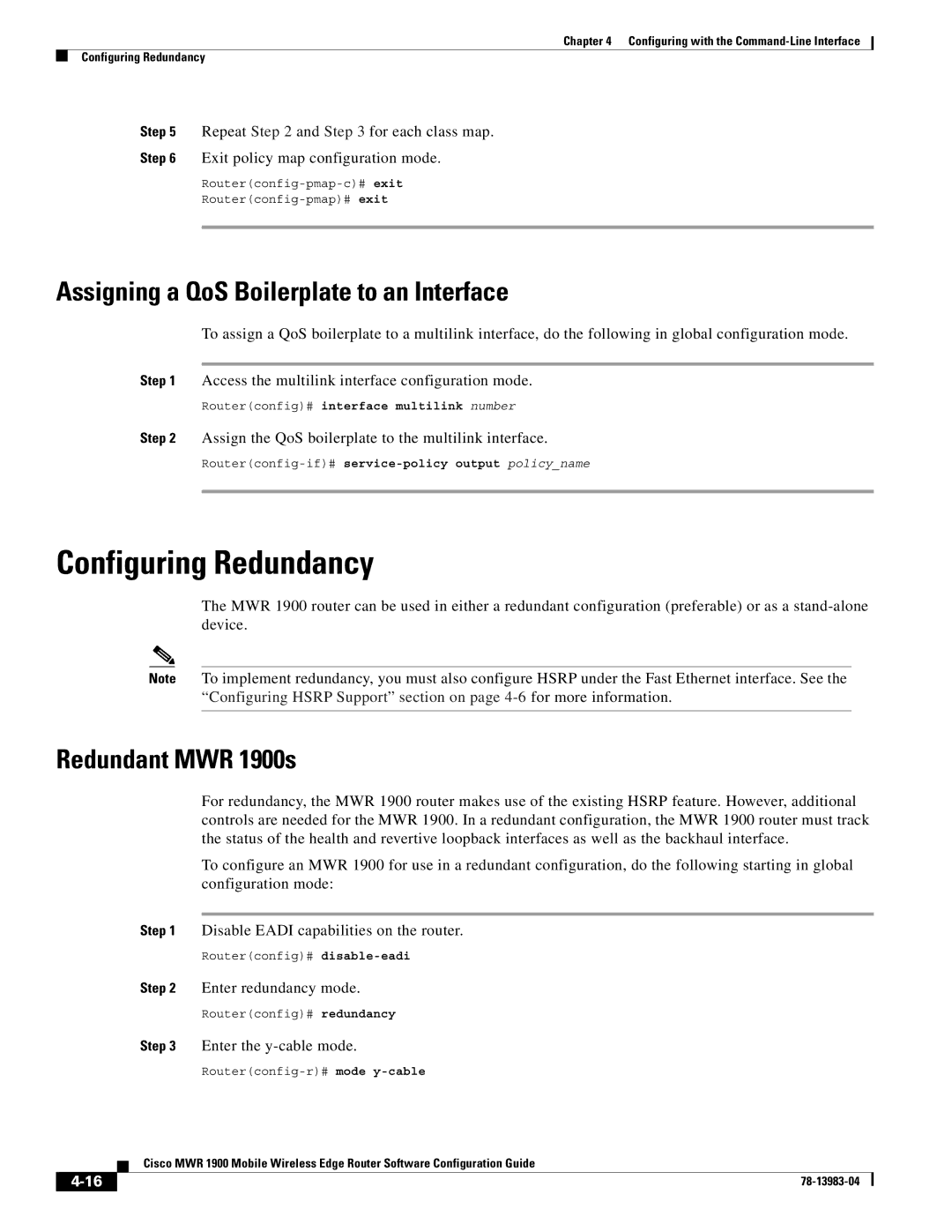
Chapter 4 Configuring with the
Configuring Redundancy
Step 5 Repeat Step 2 and Step 3 for each class map.
Step 6 Exit policy map configuration mode.
Assigning a QoS Boilerplate to an Interface
To assign a QoS boilerplate to a multilink interface, do the following in global configuration mode.
Step 1 Access the multilink interface configuration mode.
Router(config)# interface multilink number
Step 2 Assign the QoS boilerplate to the multilink interface.
Configuring Redundancy
The MWR 1900 router can be used in either a redundant configuration (preferable) or as a
Note To implement redundancy, you must also configure HSRP under the Fast Ethernet interface. See the “Configuring HSRP Support” section on page
Redundant MWR 1900s
For redundancy, the MWR 1900 router makes use of the existing HSRP feature. However, additional controls are needed for the MWR 1900. In a redundant configuration, the MWR 1900 router must track the status of the health and revertive loopback interfaces as well as the backhaul interface.
To configure an MWR 1900 for use in a redundant configuration, do the following starting in global configuration mode:
Step 1 Disable EADI capabilities on the router.
Router(config)#
Step 2 Enter redundancy mode.
Router(config)# redundancy
Step 3 Enter the y-cable mode.
Cisco MWR 1900 Mobile Wireless Edge Router Software Configuration Guide
| ||
|
